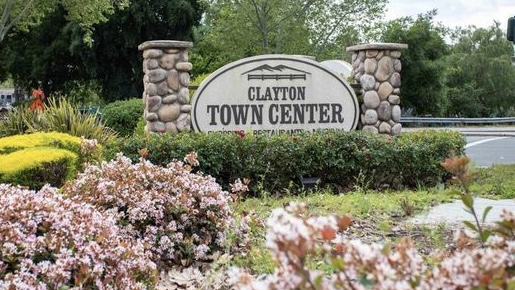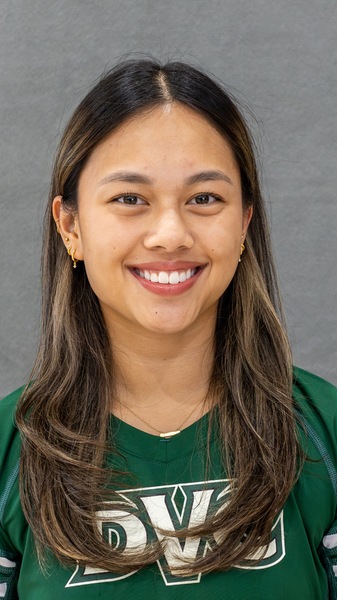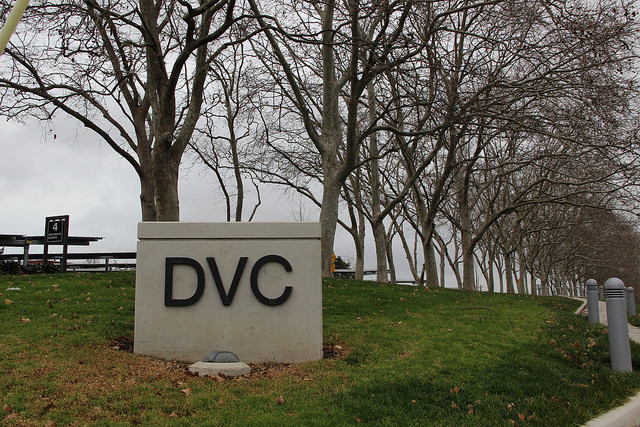Millions of dollars lost from failed courses at DVC
Students response to the third incident of graffiti and more details are released. (Inquirer file photo).
February 14, 2019
Every semester thousands of students register and pay for classes, however, not every student is able to complete or pass each of their courses.
In the Fall 2017 semester, 19,431 students enrolled in credit giving courses at Diablo Valley College, accounting for 56,671 total enrollments were with an average of 9.1 units per student. By the end of the semester 48,803 enrollments where retained, which means 13.9% decided they would not continue. Once the grades were in, 42,414 enrollments resulted in success, which means students received either an A, B, C, or a pass. This means 74.8% of the total enrollments succeeded, and 86.9% of those who didn’t withdraw succeeded. While a 74.8% success rate might be seen as slightly dismal compared to the state of California, who in Fall 2018 saw an average success rate of 61.4%. This data is made available to the public through the California Community Colleges Chancellor’s Office along with many other data sets.
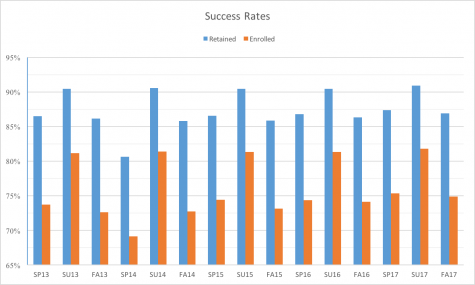
Breaking down the success and retention rates to a program level shows where improvements can be made. Engineering and Industrial Technologies had a success rate of 89.9%, Humanities had 74.6%, Physical Sciences 71.2% and Mathematics 61.1%.
“I wish they could be higher, I am looking at these other numbers and they’re all higher,” said Geography professor Michael Quinn. “It’s tough, physical sciences include physics and chemistry and they’re tough. There is tremendous room for improvement there.”
Individuals that chose to withdraw received a refund for their course which costs $46 a unit. Students who didn’t withdraw and failed the course are not eligible for a refund, which means in Fall 2017, 6,389 enrollments were unsuccessful and paid for. On average, each enrollment is 3.12 units which can be used to estimate the cost of the unsuccessful enrollments. Using this method of calculation, an estimated $916,994 was spent by students on these unsuccessful enrollments. This estimation only accounts for courses that give credit which is the vast majority of enrollments.
Applying the same methods above to the Spring and Summer of 2017 semesters result in $863,956 and $178,370 respectively, bringing the 2017 total to $1,959,320, which accounts for 12.4% of the estimated total paid enrollments for that year ($15,788,633). From 2013 to 2017 on average, an estimated $2.1 m. was paid for unsuccessful enrollments each year.
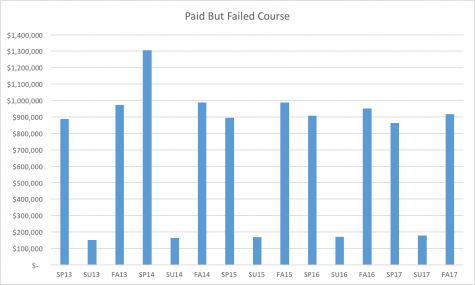
The district budget obtains funds from a variety of sources. Enrollment fees only make up a fraction of the total budget.
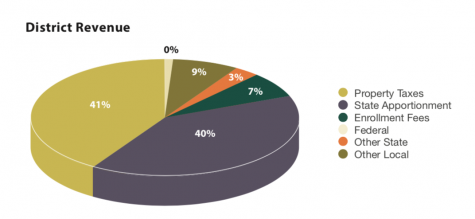
These expenses include textbooks and other supplemental materials. For example, some classes require students to purchase passes for access to online material that may only last a year or a semester.
Physical Sciences Chair and Physics Professor John Rodriguez says the goal of his department is to “Prepare students for transfer to a four-year college.” Rodriguez believes that not passing a class may indicate that a student is not ready.
While a student may not pass a certain course, they may attempt it again. A textbook purchased can be reused, and anything learned while taking the course may also come in handy in a second attempt.
“If they drop then for sure it’s a loss of money and time. The best way is, during the two weeks period, they go into each class and understand if they are able to do all the program,” said Professor Mathieu Razavian of the Engineering Department. “It’s better to take less [units], take a little longer time, but do it well, and that is very important.”



